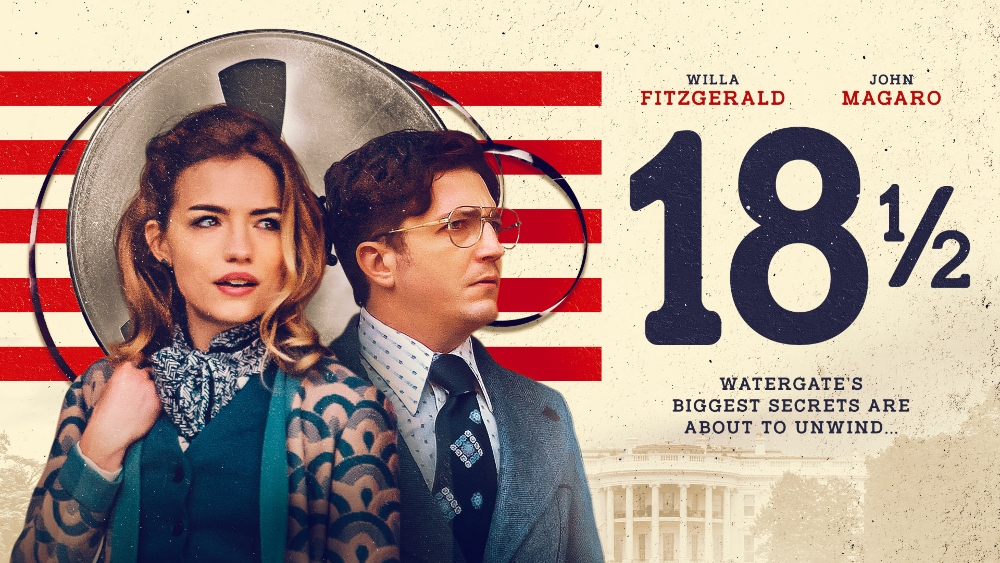
Cinematographer Elle Schneider was one of just a few people to stay on location at the Silver Sands Resort on Long Island when the pandemic forced filmmakers to shut down production on 18 ½ for several weeks. She would stay on location for a total of six months. When production resumed, the filmmakers only had four more days of shooting under the new COVID protocols before they could finish principal photography.
18 ½ hails from Dan Mirvish, who directed from a script he co-wrote with Daniel Moya. Willa Fitzgerald and John Magaro star in the film, which imagines a world where a White House transcriber comes across a recording of Richard Nixon listening to the Watergate tapes’ infamous 18.5 minute-gap prior to its deletion, and it’s a unique addition to the Watergate movie canon.
Below the Line spoke to Schneider a while back about some of the challenging aspects of the film’s production and how she looked to the films of the ’70s for inspiration. If a camera couldn’t be moved a certain way back then, she wasn’t going to move her camera that way on this film. 18 ½ represents scrappy, old-fashioned indie filmmaking at its finest, even if Mirvish and Schneider shot on digital instead of film.

Below the Line: How did you first become attached to working on 18 ½?
Elle Schneider: Dan and I had known each other socially for a number of years at that point. I don’t remember exactly when we met but we have a ton of friends in common. We kind of had just gotten to know each other as friends and knew each other’s vibes. When he was looking for a DP, my name popped up and he went, ‘oh, yeah,’ and reached out. I think we were sort of on the same page about how it could be accomplished.
BTL: What camera and lens did you use for the film?
Schneider: We shot on the VariCam LT with vintage Kowa Anamorphics. We also used, for our zooms, Cooke Varoltal 20-100, which is also a vintage lens. One Arri, I believe it was a 135mm Master Prime, for some specific, very close-up shots. We were also using split diopters for a number of shots.
BTL: Were there any older films that you studied when it came to the look of this one?
Schneider: I think the one that we referenced most frequently was Klute. But we were looking at a couple of Alan Pakula films, depictions of New York in the ’70s, some of these sort of grittier conspiracy thrillers, [plus] All the President’s Men [and] things like that, just to see sort of what the style was, what the grit was, and how the camera was moving.
Dan was very particular in setting the tone for the film. He didn’t want to do a lot of newfangled stuff that would take the audience out of the time period. We made a visual rule on set, basically, that we don’t want to move the camera in a way that it couldn’t be moved back in 1974 when the film takes place, so a lot of our visual style came from that rule.
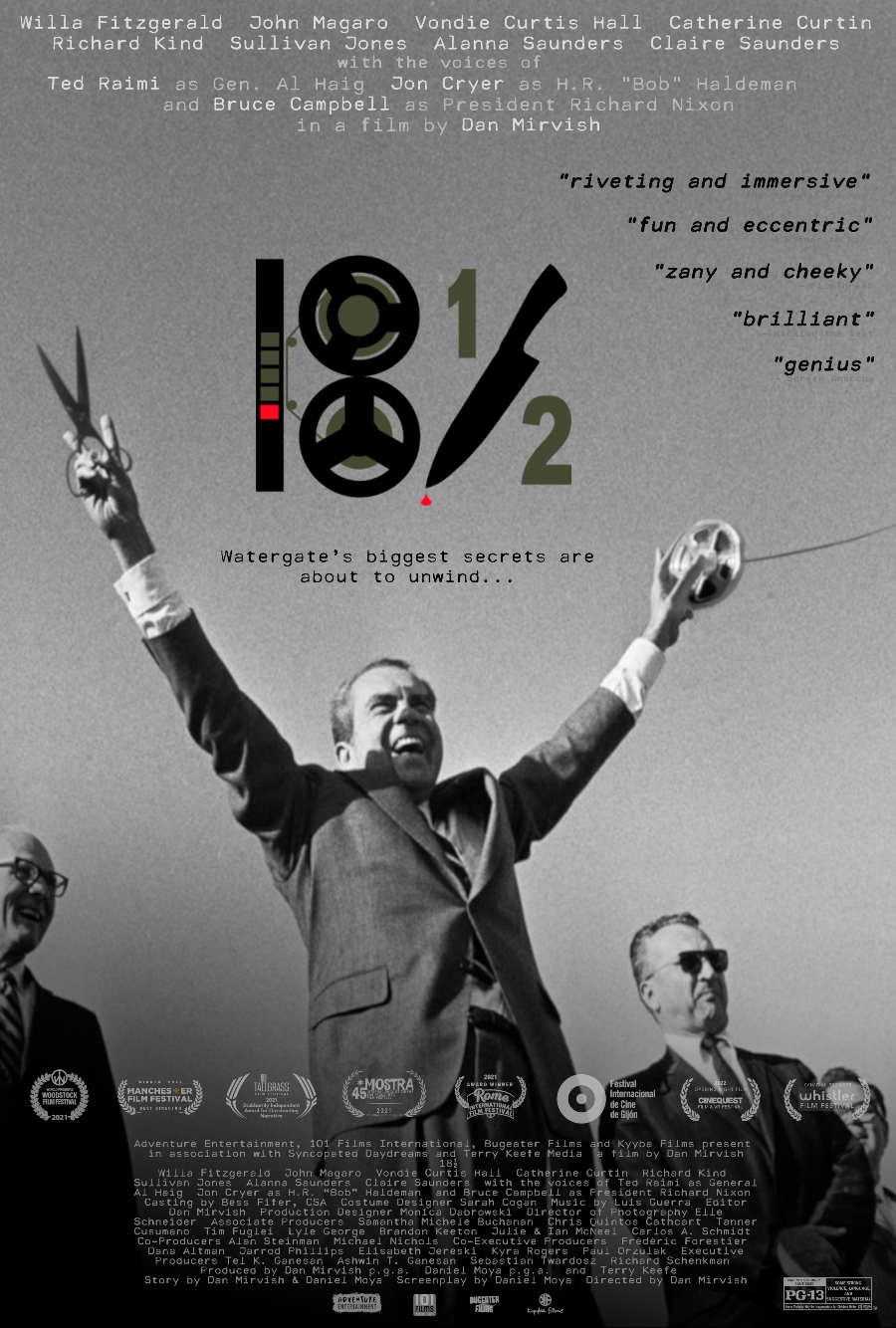
BTL: Was there a sequence that you found challenging from a cinematography perspective?
Schneider: The film was challenging in a number of ways because of the rule we set for ourselves as far as limiting the camera movement to what could be accomplished in 1974. There were a number of scenes, particularly, that stand out as challenges. One was right after Paul receives a message from Richard Kind that someone has called in and left a note with some information on it. He has a bit of a freakout and there’s an extremely long scene that includes a very long, single-take close-up. That was tricky to accomplish because there was a long dolly move at the beginning of the take. I don’t know if we clocked it but I think it’s probably at least a two-minute long, slow zoom-in.
That was a hand zoom because one of the things that I noticed as we were watching some of those ’70s thrillers is that many of those zooms are hand-pulled and they’re a little bit herky-jerky. I didn’t want to use a Micro Force, which is what allows you to sort of control — with, like, a little joystick — how the zoom goes in and out, because I felt, again, that might feel too contemporary even though there were mechanisms like that at the time.
If you actually watch the films, the majority of them seem to be hand-pulled. That [involved me] pulling the focal distance manually while my AC had to be trying to match me as much as she could, pulling focus remotely on the lens. The actors had to nail it and then we had to pull out very rapidly at the end of the scene and make sure that we kept them in focus as we were pulling out very rapidly. That was a challenge.
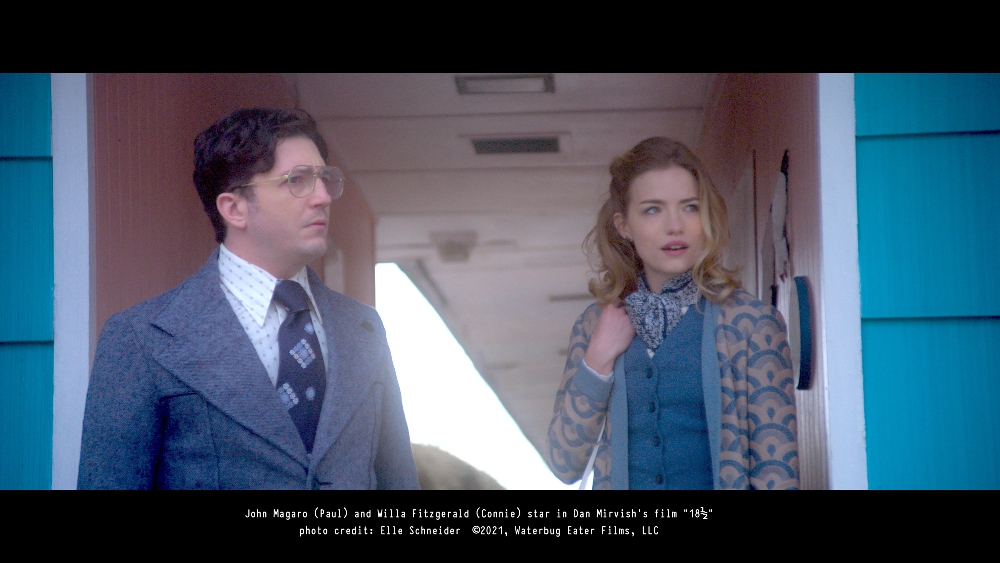
Basically, as part of the rules that we set up, anytime the 18 ½-minute tape is playing, we tried to contain that to one continuous shot and only break the shot when the tape stops playing. There are also a number of two-to-three-minute takes towards the end of the film when Connie and Paul are listening to the tape. We do zoom in and out, almost using the window as an excuse to shoot in a theatrical sort of way.
Because these takes were so long and because we’re also utilizing dolly moves from window to window as we watch them in this very kind of paranoid, voyeuristic way, we had to light assuming that we could see huge portions of the room at a time. All the lights had to be hidden in the ceiling, which is a rather low ceiling. The glass itself could have had reflections if we were trying to light from outside. I had to be hiding under a black piece of fabric so that I wasn’t — or the dolly and the camera on the tripod were not — reflected in those windows that we were shooting through. Plus, we had to really tuck the lighting away.
Luckily, we had actors [who] were able to nail some of these scenes that were really long, take after take. Once the tape was going — and in a lot of ways, those scenes were reminiscent of shooting a play — everyone really had to be on point and end up where they needed to end up. What’s really funny to me is that there are these large bushes right outside the house that blocked the windows a little bit here and there as we did our dolly moves. I think all of the dolly moves in the film are actual one-takes even [though] there are a couple places where it feels like we could have done a fake wipe there. We didn’t. It’s just that there was an actual physical bush there that blocked parts of the take.
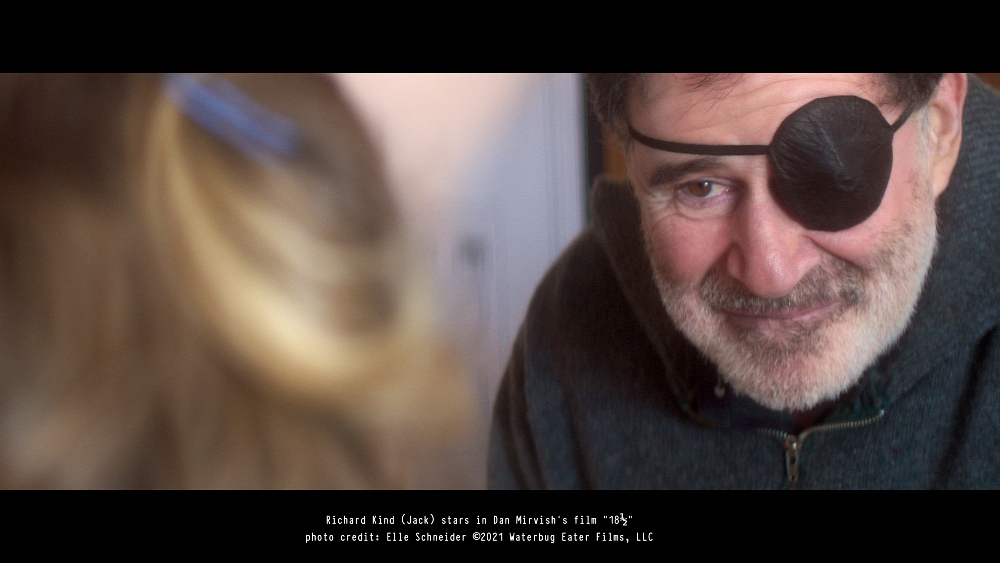
BTL: It’s my understanding that you spent six months on location, including the production pause, correct?
Schneider: I did. We had a sort of unique experience, probably the most unique film team-building that I’ve had the pleasure of experiencing even though it was in a very dark and strange time.
We started shooting 18 ½ on March 4, 2020, which turned out [to be] not the greatest time to start a feature film. We were able to make it through 11 of the 15 planned shooting days before it became clear that while the DGA and SAG-AFTRA had cleared us to keep going because we had accidentally already been isolating by the nature of how we were shooting the film, there were cast and crew that needed to get home to their families. No one really knew what was going to happen. It seemed that while there was still transportation available and there was still some food on the shelves, it made sense to take a pause.
The minority of the crew was coming from New York City. I’m from New York City originally, so when I work there, I stay with my parents. The city was really not in a good way. COVID was going crazy, cases were rampant. No one knew what to do, [it was] sort of pandemonium.
Terry, one of the producers of the film, also happened to be the owner of our shooting location. He said, ‘Hey, any of you guys that want to ride this thing out here, feel free to stay because we’re not going to be opening for tourist season anytime soon.’ I and six other members of the crew took him up on that. The seven of us were out there together, in total, [for] about 10 weeks. I stayed because I just was looking at what the airports looked like and I was like, ‘I’m gonna catch COVID if I try to get on a plane,’ so I decided to stay until it was time to finish the movie. I ended up staying, in total, [for] six months.
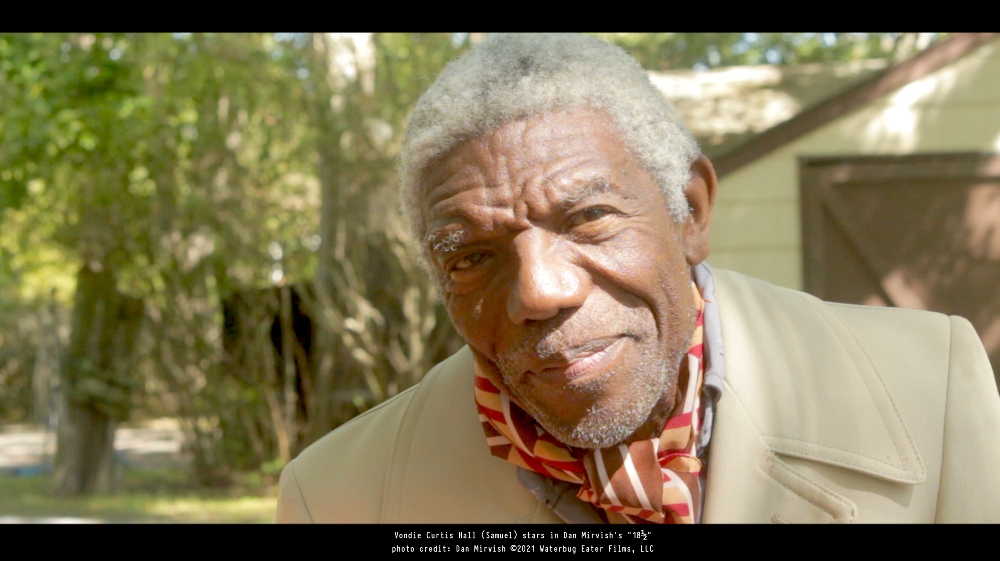
BTL: I cannot even imagine.
Schneider: It was very interesting. We had some of our gear there so we ended up shooting a couple little weird comedy spots just to have something to do. We made a COVID PSA. We made a fake COVID singles dating commercial about what would happen if we had to live like this indefinitely. We made a music video for one of the crew members, who was, by day, crew, and by night a musician. That’s actually gonna be coming out sometime in June, it looks like.
We made the most of a very strange situation. I’m very grateful to Terry that he let us stay. I’m very thankful that I got to spend the first part of the pandemic with a bunch of awesome, creative collaborators because it was definitely nicer to do that with a group than alone.
BTL: How did the pandemic impact your typical process when you all came back from the pause?
Schneider: It’s pretty tricky to make a low-budget indie film in general and when you add a never-before-seen pandemic and protocols to combat that pandemic [to] a work environment, it creates a totally new scenario that very few people have dealt with. I think Dan Mirvish and Dan Moya did a really good job of [prioritizing] safety during the pandemic on such a small project. SAG had mandated that there had to be testing every 72 hours for everybody who was going to come in contact with performers, which on such a small shoot meant everybody.
Our pickups, I guess we call them pickups, but finishing the film, there were four days left. We had to be tested multiple times in order to accomplish that four-day schedule. Just sort of fitting everything in and bringing everyone up there and having a COVID safety officer was tricky, I think, from a producing standpoint, but they were able to pull it off and that meant that we could come back and finish the film safely. I think that it’s really a testament to these producers being able to fundraise what they needed to cover this really never-before-seen expense that no one would have ever written into the budget, but they were able to make it work.
As far as [the] shooting process, other than scheduling concerns around the testing and the waiting period to receive results back, there wasn’t a huge change. The one tricky thing is that our last shooting day was also a “waiting for tests before we can return to work” day. That meant that people were receiving their negative results on a rolling basis throughout the day, which meant that there were some shots that… luckily, Dan Mirvish and I were cleared first, so we were able to go and sort of guerrilla shoot one or two things, just the two of us, [before] the costume designer and the production designer were cleared.
I ended up helping them get things ready for our last scene because the other crew wasn’t yet cleared to come in and do what they needed to do. It kind of became a bit of a real team effort in an extra way. That’s unusual, but it just had to be all hands on deck based on who was cleared and not cleared. I think that’s one of those things where the fact that many of us had that period of living together for 10 weeks, we already had that mentality and knew how to make the most of the situation.
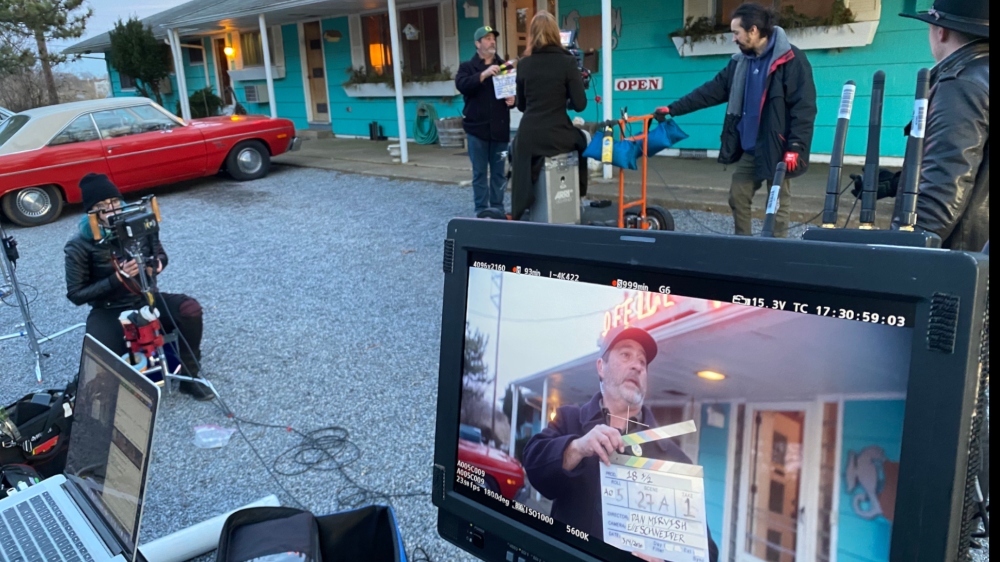
BTL: Do you prefer shooting on film or digital?
Schneider: I’ve never been lucky enough to work on a project that had the resources to be able to shoot on film. We considered shooting this film on the Digital Bolex but there were two reasons that I decided to go with the VariCam instead. One was that the Bolexes shoot fully raw. Because we were going to be doing these massively long takes, I didn’t want to be in a position where we were on a tight schedule doing long takes and ran out of space. The other is the Bolex is being used for a lot of really amazing films right now but I wasn’t sure what Dan’s distribution path was going to be and sometimes, there is still this sort of “must be 4K” mandate that some people have. I didn’t want to lock him into that if he didn’t have to be locked into that. I don’t think that film on this particular project was a consideration because of the budget. Dan and I felt that between the lenses that I was choosing to shoot on, which had a lot of character in them, plus some of the filtering that I was using, plus the way that he planned, to some degree, to manipulate the footage in post, that that would come close to achieving sort of a ’70s look.
BTL: Going into this film, did you have a favorite movie about Watergate?
Schneider: [laughs] Probably the movie or series that I was most familiar with regarding Watergate was All the President’s Men. That’s a film that I’ve seen many times and I enjoy it. It kind of gives you a good overview of who a lot of the players are. Being familiar with that film was really helpful to me going into [reading] the script for 18 ½ because I didn’t have to stop and look anybody up. I generally knew what had happened and what was going on.
I’m actually pretty excited about some of the new ones that are coming out now because I think they will give an additional spin on some of these political stories from the time period and explore more deeply some of the characters [who] are brought up in 18 ½ and [who] are brought up but don’t necessarily appear in All the President’s Men. I think that 18 ½ fits kind of interestingly into this group of stories that are coming out now.
18 1/2 is now available to rent or buy on iTunes and other VOD/digital platforms.





